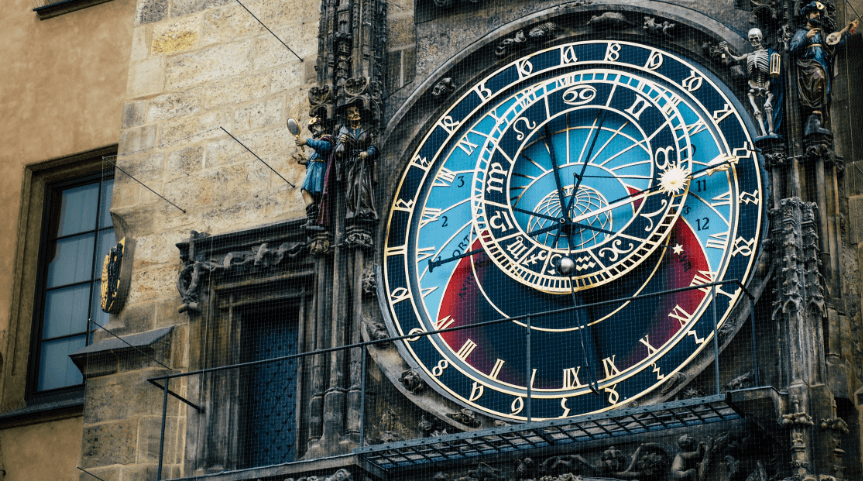Tick-tock, tick-tock. Time is a precious commodity that we all wish to manage well. And what better way to do so than with the enchanting world of astronomical clocks? These intricate timepieces not only tell the time but also showcase an awe-inspiring display of mechanical and astronomical movements. Join us as we delve into the history, mechanics, types, and tips on choosing your very own astronomical clock in this symphony of timekeeping wonders!
What is an astronomical clock?
An astronomical clock is a timepiece that provides not only the time but also displays various astronomical functions. These clocks showcase a variety of mechanical movements to display celestial events such as the positions of the sun, moon, planets and stars. They are designed to show complex astronomical information in an easy-to-understand way for viewers.
See also Maximizing Your Opportunities: Yimusanfendi’s Guide to H1B Visa Sponsorship
Astronomical clocks date back to the 14th century when they were mainly used by astronomers and scientists to study celestial bodies. However, over time they became popular among wealthy patrons who commissioned them for their beauty and intricate designs.
The mechanisms used in astronomical clocks include gears, wheels, cams and weights which work together seamlessly to provide accurate readings. The complexity of these mechanisms means that each clock is unique in its design with no two being exactly alike.
Astronomical clocks are often housed in public buildings such as town halls or churches where they can be admired by all visitors. Many famous examples can be found throughout Europe including Prague’s Astronomical Clock which dates back to 1410 and Strasbourg Cathedral’s Astronomical Clock from 1843.
An astronomical clock is much more than just a simple timepiece – it showcases both technical prowess and creativity through its intricate design while providing valuable knowledge about our universe!
The history of the astronomical clock
The history of the astronomical clock dates back to the 14th century, when people were fascinated by the celestial bodies and their movements. The first astronomical clocks were simple devices that displayed only a few basic astronomical functions.
One of the most famous early examples is the Prague Astronomical Clock, which was built in 1410. This clock not only showed time but also tracked planetary positions and phases of the moon. It was considered one of Europe’s greatest marvels at that time.
In later centuries, more complex and intricate astronomical clocks were built with additional features such as moving figures representing astrological signs or dioramas depicting scenes from mythology or religion. These clocks became symbols of wealth, power, and scientific knowledge among royalty and nobility.
Today, modern technology has enabled us to build even more sophisticated astronomical clocks with accurate atomic timing systems that allow for precise tracking of celestial events like
eclipses or meteor showers. Despite this technological progress, many still appreciate these mechanical wonders for their artistry and historical importance as they continue to intrigue both scientists and laypeople alike.
See also Geek Alabama: Uniting the Social, Local, and Smart Communities
The mechanics of an astronomical clock
The mechanics of an astronomical clock are a true marvel of engineering. These timepieces not only tell the time but also provide intricate details about celestial movements and various other astronomical information.
At the core of an astronomical clock lies a mechanical movement that powers its different components. This movement consists of gears, levers, and springs that work together to keep the clock running accurately.
In addition to the basic hour hand and minute hand, most astronomical clocks feature additional dials or hands that display information such as lunar phases, sunrise and sunset times, planetary positions, zodiac signs, and more.
Some models even include complex mechanisms like planetariums or astrolabes to showcase cosmic events in real-time. To ensure accurate readings, these clocks require periodic adjustments based on changes in celestial cycles.
Understanding the mechanics behind an astronomical clock allows us to appreciate these remarkable devices for their precision engineering and artistic beauty.
How to choose the right astronomical clock
Choosing the right astronomical clock can seem like a daunting task, but with some basic knowledge and considerations, it can be an enjoyable experience.
The first thing to consider is your budget. Astronomical clocks range in price from affordable to extremely expensive. Determine how much you are willing to spend before beginning your search.
Next, decide on the features you want in an astronomical clock. Some have additional functions such as alarms or weather indicators, while others strictly display time and planetary movements.
Consider the size of the clock and where you plan to place it in your home or office. Be sure to measure the space beforehand so that you choose a clock that fits appropriately.
Think about whether you prefer a traditional or modern design aesthetic for your astronomical clock. There are many styles available ranging from antique reproductions to sleek contemporary designs.
Research different brands and read reviews from other customers who have purchased similar models. This will give you insight into durability, accuracy of timekeeping and overall customer satisfaction with their purchase.
By taking these factors into consideration when choosing an astronomical clock, you’ll be able to find one that suits both your practical needs and personal preferences!
The different types of astronomical clocks
The world of astronomical clocks is vast and varied, with different types of these timepieces being created over the centuries. One type is the astrolabe clock, which was popular during medieval times. This type of clock incorporated an astrolabe – an instrument used to locate stars – into its design, allowing for precise tracking of celestial movements.
Another type is the planetarium clock, which displays information about planetary movements as well as providing a standard time display. These clocks often incorporate intricate mechanical features to provide an accurate representation of the solar system within their designs.
A third type is the orrery clock, named after Charles Boyle, Earl of Orrery who commissioned one in 1704. An orrery clock incorporates a model solar system that demonstrates planetary orbits around the sun. The most complex orreries also include moons and other celestial bodies.
There are modern-day astronomical clocks that use digital technology to display data on computer screens rather than using traditional mechanical mechanisms like gears and cogs. While not as visually impressive as their historical counterparts, they offer incredibly accurate readings and can be programmed to track multiple locations simultaneously.
Each type has its own unique qualities and appeal for enthusiasts of horology and astronomy alike. Choosing between them depends on personal preference and desired functions but all share a common fascination with our universe’s workings through timekeeping artistry!
See also Debunking the Misconceptions of Beyond Biocentrism
Conclusion
To sum it up, astronomical clocks are not just time tellers but works of art that have fascinated people for centuries. From their intricate mechanics to the beautiful designs and motifs adorning them, astronomical clocks have a charm that is hard to resist.
Whether you’re a history buff or an enthusiast of engineering marvels, an astronomical clock is definitely worth investing in. With so many options available in the market today, from traditional mechanical ones to modern digital ones with advanced features, there’s something for everyone.
So go ahead and add some enchantment to your home or office with a stunning astronomical clock. Let its symphony fill your space with wonder and magic!





 Dive into Flavor: Discover the Perfect Cookout Sauces
Dive into Flavor: Discover the Perfect Cookout Sauces